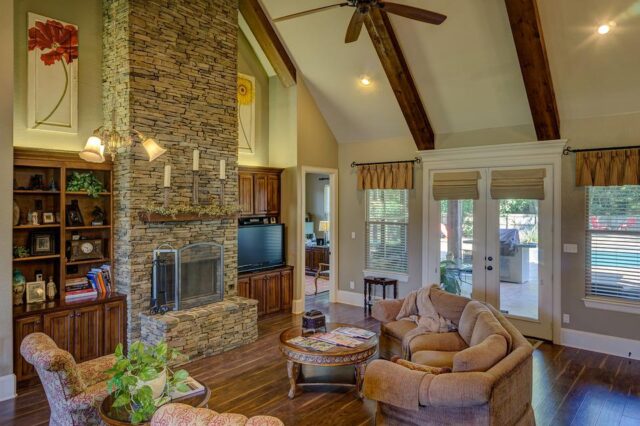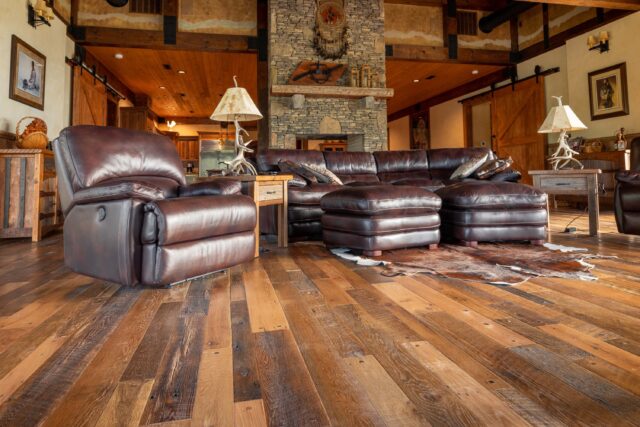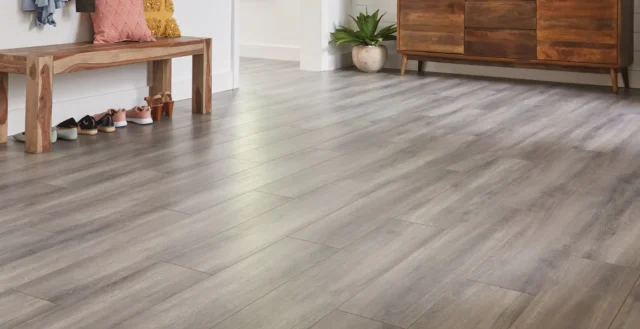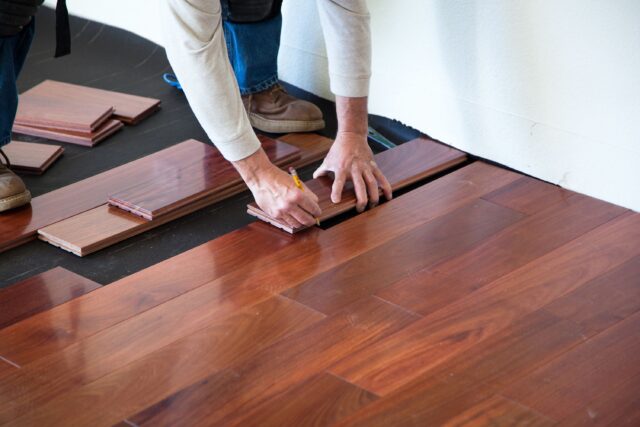
When you are laying new flooring for your home, whether it is to improve the price of your property or just some maintenance that you want to undertake yourself, you might be tempted to have a go at it yourself. Laying floors can be time-consuming and difficult, but it can be more affordable than having the pros do it and you can still end up with a fantastic finish. Are you thinking about laying your floors yourself? Here are some of the things you need to know to do so!
Can You Lay Flooring Yourself?
There are many things around your home that you could choose to DIY. If you are trying to keep the costs of your project as low as possible overall, you should definitely think about doing it yourself as much as you can. Yes, it might be difficult to juggle around a job and other commitments, and it will stretch out the time of the project greatly, but there are many types of flooring that you can opt to lay yourself.
If you do, it can often form a talking point when discussing the room and can give you a great sense of pride whenever you spend time there. However, you do need to make sure that you follow all the right steps to ensure that you don’t end up with a botch job. If this is the case, you will likely have to get the professionals in to fix your mistakes. Not only will this cost you, but you will have to buy new materials too – so is it really worth it?
Have you actually got the time needed to lay your floors yourself? This is not going to be a quick project like painting a wall. It is one that needs time and precision if you are to do it yourself. If you know that you are not going to be able to deliver the time that your floors need, it might be a better idea to look into having a professional come in and help you out.
Your flooring supplier should be able to give you good instructions if you wish to lay your floors yourself, but don’t be afraid to turn to the internet too. From blogs to videos and more, you can bet that the internet will have the information that you need to help you lay your floors.
Let’s take a look at some of the most popular and common floor types that DIYers love to use and establish how easy it would be for you, whether you are a novice or not, to lay them.
Wood

Many people love the look of wood flooring. It can fit in with a variety of interior décor styles and comes in a range of colours. Think you have to stick to natural hues? Think again – you can find white and grey options out there, and with so many stains on the market, you can easily have the colour of your dreams. Remember that you don’t have to stick to basic planks too! You could choose planks, but you can also pick parquet – whether this is herringbone, Tudor-style, or any other type of parquet that might catch your eye!
The two main choices that we have tend to be solid wood and engineered wood. Is there a difference between them? Solid wood floors, as the name might suggest, are completely solid. They tend to be made of harder wood like oak or walnut, and they will have narrower boards than what we typically see with other types of wood flooring.
Engineered wood flooring, on the other hand, is a layer of hardwood that has been bonded to high-quality plywood. This makes it that bit more affordable than solid wood flooring, but once it is down then you will never know the difference!
A great reason to choose wood flooring is that it is one of the types of flooring that can be used in conjunction with underfloor heating. Adding this to your home is a real prestige option that can instantly make your home feel a little more luxurious.
One difficulty that real wood flooring may present is when it’s patterned. Parquet flooring, for instance, is chevroned. It’s a collection of smaller pieces that fit together to make that classic chevron style. Due to the quantity of pieces and how fiddly it is to get look cohesive together, it’s often advised to get professionals in. While you are perfectly capable of doing it yourself by accessing the right installation guidance and advice, it may be best to defer to the experts. Parquet flooring is a statement. The pattern draws in the eye, is largely the focus of the room. Getting the installation wrong would be a waste. You can build sentimental value over the mistakes, of course – ‘I did that!’ – but having a flawlessly installed flooring is usually preferred.
Laminate

If you have your heart set on DIYing your floors, one of the easiest options out there for you to manage by far is laminate. Like engineered wood flooring, it is a layer atop a plywood baseboard. With laminate, however, it might not always be real wood and instead might be an image that has been laid to try to simulate wood. This makes it a very affordable choice for any searching for the perfect type of wood flooring.
Why is it so simple to lay? Simply because it is like a giant puzzle! You need to find a wood at woodfloorwarehouse.co.uk who will give you everything you need to be able to lay your floors correctly. It does not matter if you choose a pattern that is complex or simple, or whether it is your first time attempting to lay it down or not – it might be simpler than you think to do so!
The hardest part about laying your own wood or laminate flooring is that you might have to cut certain lengths to best fit your space. Make sure that you have all the right tools you need before you begin this process, and take your time with it! Even if you need to lay out a complex parquet, you should have no trouble doing so if you take the time and work out what the pattern is beforehand.
Though this might be one of the more time-consuming DIY projects you undertake, there is no denying that it might also be one of the most impressive! Who wouldn’t want to look at a beautiful wooden floor and have the satisfaction of knowing that they laid it themselves?
What Else Should I Bear in Mind Before Laying My Floors?
It doesn’t matter what you are trying to put over it if the underfloor is a mess then you are going to be fighting an uphill battle when it comes to getting a nice finish. One of the first things that you need to check is how even it is. Your room might have a natural slope to it if you are in an older building (a separate issue altogether!) but it should still be relatively flat and even. Take the time to ensure that the underfloor is as even as possible before you start laying the floor – even if that means you need to put in a layer of screed.

You also need to check that things are perfectly dry. If you have an issue with your foundation or underfloor, moisture can come up from the ground and cause damage to your floors. For example, it could cause that wood floor you worked so hard to lay properly to warp.
Make sure that you have the right tools as well! You should be able to gather the basics of what you need from your flooring supplier in terms of underlay and fastenings. However, there might be a few other things that you need, which will help you to cut your floor planks or tiles so that they are the right size. Tasks like this all need to be done properly to avoid costly mistakes. It should be easy for you to pick up the tools you need from a hardware store, whether you hire or buy them. Some experts may have conflicting guidance on which tools you need, but it’s best to go the safest route and cover your bases.
Laying your own floors is not too difficult a project, and even first-timers should be able to work it out without too much effort. Of all the types of flooring that you could lay yourself, we think that wood or laminate is the best option for novices. However, you need to make sure that you take your time with it. Start by optimising the conditions in the room, ensure that you have all the correct tools, and know what you are doing before you start. Before you know it, you could have the perfect floors that you have always dreamed of – and you put them in place yourself!